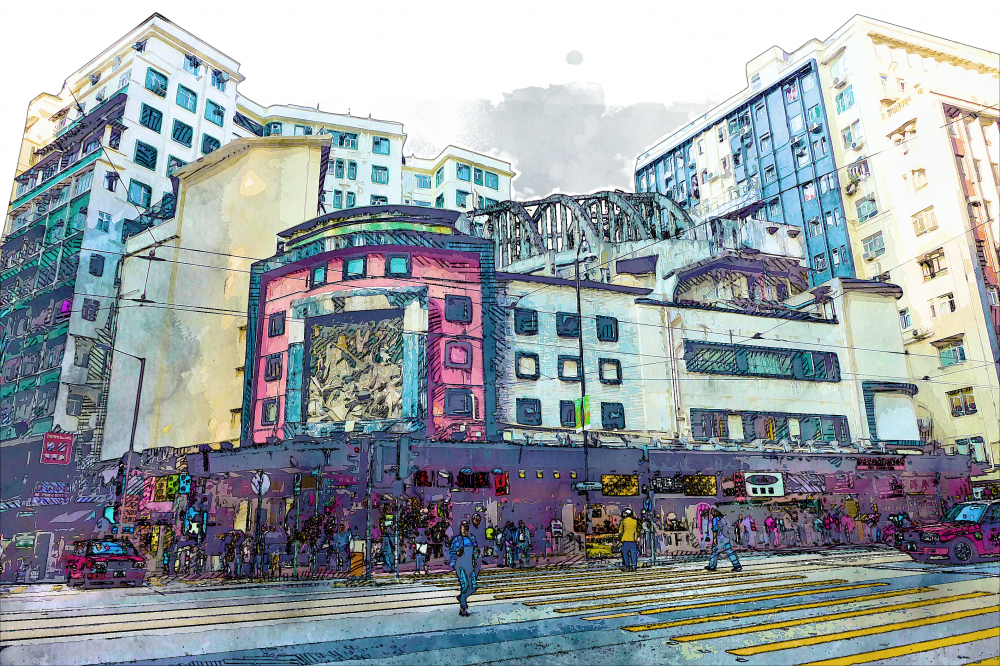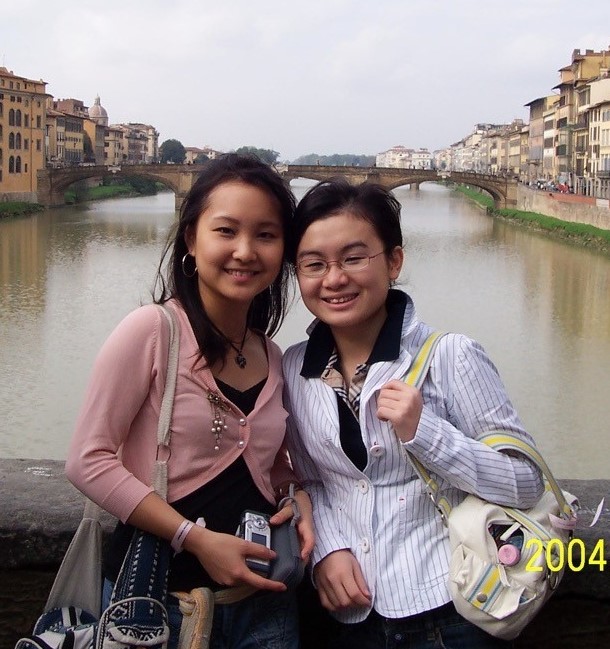Dr Prudence Lau’s academic journey from architectural history to heritage education

On a sunny afternoon in January 2019, together with my research assistant, I visited the State Theatre in North Point to collect stories from a few remaining tenants still running their businesses at the much-dilapidated shopping mall inside the defunct theatre. The stories were to be included in a journal article about heritage conservation in Hong Kong. After finishing the fieldwork, we strolled around the neighbourhood of the theatre. Looking at its iconic parabolic exoskeleton rooftop structure as I mulled over all the lively stories people had just told me, I felt that a building recording the fond memories of so many people and carrying such rich historical and cultural significance should never be demolished. It should, instead, be properly conserved and be restored to its former glory.

The State Theatre was a recent watershed in local architectural conservation. It was one of the most important projects that I was partially involved in and had witnessed since starting my teaching career in EdUHK (HKIEd at the time) in 2013. I studied architecture for my undergraduate degree, and then continued to pursue my doctoral programme studying the modern architectural movements of the 20th century. After joining the Department of Cultural and Creative Arts, I shifted my research and teaching focus from architectural history to heritage conservation and heritage education. Architectural history and heritage studies might sound like two different disciplines. But to me, they are cut from the same cloth: at the core of both disciplines lie a concern for people’s identity and a respect for history and culture. Such concern and respect are closely related to my personal background.
Since childhood, my parents and grandparents told me many stories about history and Chinese culture. Growing up in a family where my two previous generations were educators, I developed a strong interest in humanities subjects from a young age. My family upbringing, coupled with my passion for the arts and sciences, influenced my decision to study architecture for my undergraduate degree and PhD programme.
I pursued my undergraduate studies in architecture, and then PhD studies, in Hong Kong after finishing my A-level studies in the UK. While I was pondering the topic for my doctoral thesis, I found that there was little discussion in academia about modern architecture and the architectural movements of early 20th century Hong Kong and mainland China. This became the research question of my doctoral thesis. Most conventional architectural studies emphasise how to make innovative ideas for designing and constructing buildings for the future. But to a history lover like me, conducting research on the architecture of my own city instead was the preferred choice. It would prove to be the right decision for me.
The icing on the cake was when my studies brought me to Belgium, where I learnt more about the late Belgian architect Gabriel Van Wylick through his descendants.
Apart from digging out all the hard facts about modern architecture and architectural movements of early 20th century Hong Kong and mainland China, my doctoral studies explored many social and historical topics that interested me, such as the historical and cultural contexts under which modern architecture has evolved, and how Asian people perceived western culture in the 1920s. The icing on the cake was when my studies brought me to Belgium, where I learnt more about the late Belgian architect Gabriel Van Wylick through his descendants.

I came across the name of Mr Van Wylick when I found that the Franco-Belgian architecture company Credit Foncier d'Extreme-Orient (The Far East Land Property Credit Company) was a very active player in the industry during the period of my study. They constructed many buildings with modern western architectural features, or “semi-foreign” architecture as referred to by the Franco-Belgian company’s documents, in Hong Kong, Tianjin, Shanghai and Hankou. Belgian architect Gabriel Van Wylick was head of its Hong Kong branch in the 1920s and 1930s. Architectural projects under his charge, including the 190-220 Prince Edward Road West project that exists to this day, formed a crucial part of my studies.
To access first-hand archival materials about the company’s building projects in Hong Kong and mainland China during the early 20th century, I flew over to Belgium and stayed there for two months in 2011. In Belgium, I had the opportunity to meet Mr Van Wylick’s son, who shared with me many interesting anecdotes about his late father. Among them, he showed me a house that his father had built in 1928 in his hometown of Brussels. The house, which displays a mix of western and Chinese architectural styles, still stands out today along a quiet street in Brussels, and reflects what he had tried to pursue but to no avail for his clients previously in Hankou. It is also testament to what the late Gabriel Van Wylick termed as respecting the “local character” of where he worked – which was China.
On a tangent here, the appearance of modern architecture belonged to a broader movement of Art Deco. It was a global movement of the 1910-30s that swept across many fields of artistic activities including visual art, decoration, product design, fashion, and architecture. Art Deco was a movement in reaction to the rapid emergence of the middle class in the West, in Hong Kong and mainland China and elsewhere in the world during the years between the two World Wars – also known as the roaring twenties – and created a huge demand for modern and more finely-designed products.
I was delighted by how my doctoral studies enriched my understanding about people by revealing to me their changing beliefs and their respect towards culture via architectural design. It also instilled in me a reverence for these beliefs and ideas, and reinforced my own belief that architecture is not merely about providing a physical space, but is also about creating values and memories as people live, work and play in the space. As venues for people’s activities, architecture should relate itself with the history and community of the place it is located. Similar considerations apply to heritage studies.
Heritage conservation is not solely about the maintenance of a historic building or an ancient site. It is about converting a historically and culturally significant location into a place where people can enjoy everyday activities while maintaining their connection with the past.
When teaching my students about how to preserve a heritage site, I always highlight that heritage conservation is not solely about the maintenance of a historic building or an ancient site. It is about converting a historically and culturally significant location into a place where people can enjoy everyday activities while maintaining their connection with the past. Apart from keeping its character-defining architectural features, a heritage site should keep as much of its original face and functions as possible to allow for the current community to recount their personal stories and for the next generation to learn about all that came before them. As memories are the key to identity, heritage sites become places where people build a common identity through historical and cultural narratives.
I love citing Blue House, which was built in the 1920s in Wanchai, as a success model for heritage conservation. The revitalisation work improved the outlook and structural safety of the four-storey building without altering its original architectural features. Visiting Blue House today, you can still see its timber structures, balconies and staircases, typical of a tong-lau of the 1920s. Both original and new residents of Blue House are “co-living” in this building, as a conscious strategy to establish community engagement. An NGO stationed there organises community art and traditional handicraft workshops, guided community tours, and concerts for the public. Together with two adjacent tong-lau buildings, Blue House won the Award of Excellence of the UNESCO Asia-Pacific Awards for Cultural Heritage Conservation in 2017, affirming the revitalisation concept that retains both the building and the people inside.

When studying for my A-Levels in the UK, I visited Florence as part of an art history class trip. Known as the cradle of the European Renaissance, Florence preserves its heritage very well. The beauty of Renaissance art and architecture including the Palazzo Medici, the works of art at the Uffizi Gallery, and Florence Cathedral (where we climbed to the top of the dome) stunned me, enticing me to study architecture later on in my life. Having shifted my focus to heritage education in the recent decade, the study trip to Florence has gained another layer of meaning. Because of the paintings, sculptures and architecture from the past, people to this day can revisit and imagine how these works were created centuries ago. It also deepens their historical and cultural roots. And that is why heritage conservation is pivotal to human existence.
The Sound of Music has also become one of my favourite movies and my daughter is named after the character in the movie who sang “Sixteen Going on Seventeen”.
My mother told me that the State Theatre was not far from her secondary school. During the 1960s, the theatre screened many fabulous movies – international and local productions alike. She still clearly remembers the day she saw the Sound of Music with her classmates there. It was a time when the theatre was still one of the major cultural and entertainment hubs in Hong Kong. As a matter of fact, the Sound of Music has also become one of my favourite movies and my daughter is named after the character in the movie who sang “Sixteen Going on Seventeen”.
The moment I left the State Theatre after my fieldwork in 2019, it was still uncertain whether it would escape demolition. My earnest hopes were met with joyous celebrations when the developer who owns the theatre announced in 2020 that the oldest surviving movie palace of Hong Kong would be undergoing complete architectural conservation. This triumph came as a result of the concerted efforts of heritage advocates, professional bodies, and academia. Voices from the public played a key role as well.
The city is now anticipating that the State Theatre will re-emerge as a cultural and entertainment hub, just like it was when it opened in 1952. Good architecture and well-restored heritage sites make the city more livable and memorable. In an ever-changing city like Hong Kong, it is a blessing that we can still find heritage sites like Blue House in Wanchai, Green Hub in Taipo, and the State Theatre in North Point, which have survived changes for many decades – sometimes even centuries. They bear witness to how much our city has developed.
As educators in the humanities, my family has always reminded me that people need to connect with historical and cultural anchors in their lives. Their advice has been planted deeply in my heart, guiding me in everything I do today, whether I am conducting a research project on architectural history or engaging myself in heritage conservation or education work. Indeed, their words will continue to guide me in the years to come.
Note: Dr Prudence Lau received her PhD in Architecture from The Chinese University of Hong Kong. She was a founding member of the Hong Kong Chapter of DOCOMOMO (Documentation and Conservation of buildings, sites and neighbourhoods of the Modern Movement), and co-curated the first DOCOMOMO Hong Kong exhibition in 2013. She collaborates with professionals and local organisations with the aim of raising awareness in the arts as well as the cultural and urban heritage of Hong Kong and Asia in the modern period.
(Dr Prudence Lau collaborated with Tam Siu-man on this piece.)



